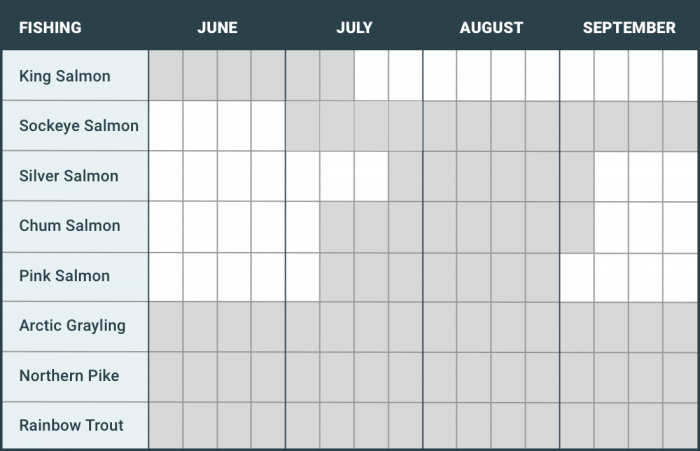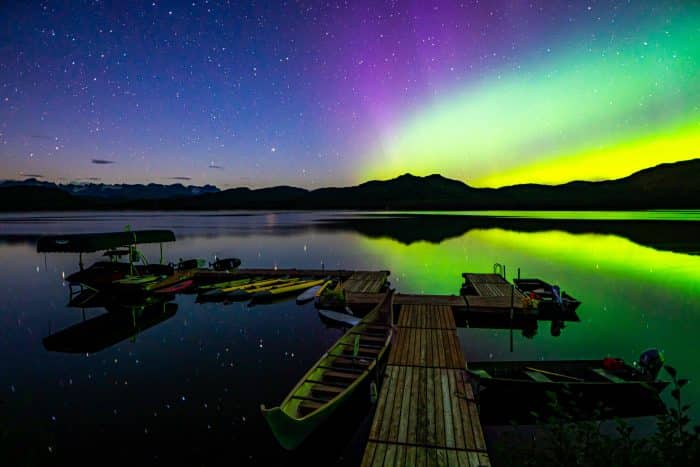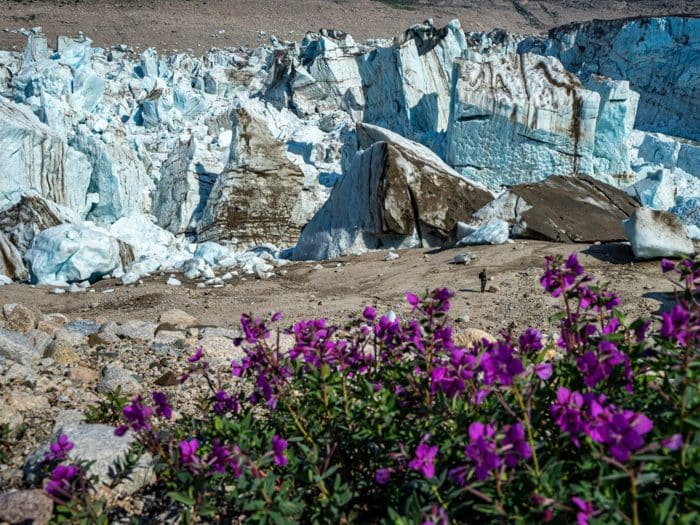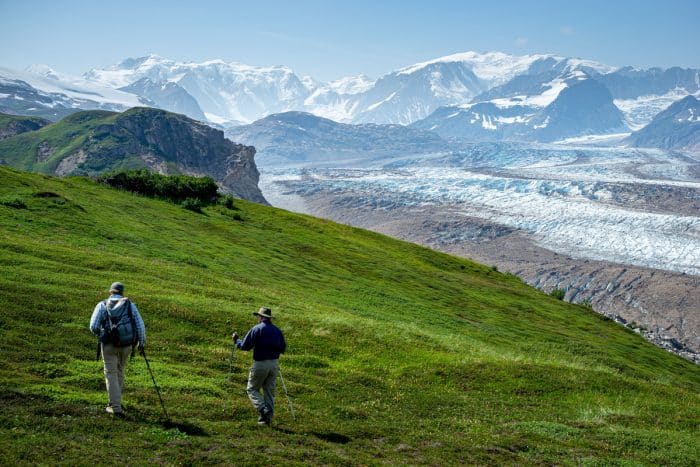Your Guide to Fishing in Alaska: Everything You Need to Know
Dreaming about casting your line in Alaska? The state offers some of the most unique and remote freshwater and saltwater fishing anywhere in the world. And with 627 species, three million lakes, 12,000 rivers, and countless streams, the reasons why you might want to plan an Alaska fishing trip are as endless as the fishing holes. Read this Alaska fishing guide to narrow down when and where to go, what you’ll need when you get there, and how to safely send your catch back home.
Best Time of Year to Fish in Alaska
When’s the best time to fish in Alaska? You can fish year-round in Alaska, but most anglers plan their trip for the summer months when the salmon are running. The salmon season runs from May through September, and throughout the season, different species of salmon make their runs from the ocean to the upper reaches of Alaska’s rivers. The first to run are the king (chinook) salmon in June, followed in July and August by the sockeye (red) salmon, silver (coho) salmon, chum (dog) salmon, and pink (humpy) salmon.
But salmon isn’t the only sought-after fish in Alaska. Anglers make their way to Alaska for rainbow trout, arctic grayling, and northern pike, found in lakes and streams throughout Alaska. Visitors can fish these species all year long; however, they can be more challenging to catch in the winter when fish slow down and don’t move very far to feed.
Freshwater Fishing vs. Saltwater Fishing in Alaska
Alaska affords incredible saltwater and freshwater fishing opportunities. Choosing whether you want to hit Alaska’s deep fjords and coastal waters or find a hidden fishing hole inland mostly comes down to what type of fish and experience you’re after.
Depending on the time of year and your location, you can fish for all five types of salmon in Alaska’s salt waters. But many anglers want to hit the open ocean to try their luck at catching a monster halibut. These fish can often weigh over 100 pounds (the Alaska state record stands at 459 pounds). The halibut is a bottomfish and is typically caught on or near the ocean floor.
You won’t find these big guys in freshwater, though, so if you’re after halibut, you’ll want to plan a saltwater fishing experience. Anglers are also drawn to Alaska’s saltwater for rockfish, lingcod, and Dungeness crab.
Alaska’s freshwater lakes, rivers, and streams might be best known for the summer salmon runs, but there are dozens of other freshwater species that call this state home. Each ecosystem throughout the state offers a different fishing experience.
Along the southern coast and into southcentral Alaska, you’ll find all five species of Pacific salmon, grayling, Dolly Varden, rainbow trout, and lake trout in crystal-clear rivers, streams, and lakes. As you head into Alaska’s interior, you’re likely to discover lakes offering trout and grayling. And in the western arctic region, you’ll find some of the best pike and char fishing in the entire state.
Fly Fishing in Alaska
From late spring and into the fall, anglers flock to the state to experience Alaska fly fishing. Whether you find a river on the side of a road or take a helicopter or float plane to a remote fishing hole, the entire state is rich with untouched fishing opportunities to enjoy in complete solitude. Popular places to fly fish include the Alagnak River, Kenai River, and Denali National Park and Preserve—but if you’re looking for a true one-of-a-kind experience, it’s worth it to have a local guide take you off the beaten path.
Helicopter Fishing in Alaska
One of the most unique ways to access Alaska’s harder-to-reach riverbanks and shoals is a helicopter fishing trip. At Tordrillo Mountain Lodge, we give guests the epic experience of taking off from our luxury lodge on Judd Lake and within minutes, landing right on the shores of otherwise-inaccessible fishing holes. Knowledgeable and experienced guides will lead you to some of the richest fishing spots in the remote Tordrillo Mountains, where it’s unlikely you’ll ever compete with another angler.
Interested? Check out our summer dates and learn more about summer at Tordrillo Mountain Lodge.
Gear You’ll Need for Alaska Fishing
Once you’ve planned your trip, you might wonder what you’ll need to bring. Summer weather in Alaska can be warm, cold, dry, and wet, all on the same day—so the number one rule is to pack layers. Some of the essentials you’ll need for an Alaska fishing trip include:
- 1-3 rods/reels per person (ideally, travel rods) and tackle
- 1 pair chest-high waders
- 1 wading/rain jacket with a hood
- 1 pair wading boots with rubber soles
- 1 pair of trail-running shoes or hiking boots
- 1 pair of sandals
- 1 medium-heavy insulated jacket
- Lightweight gloves
- Lightweight hat
- Comfortable clothes to wear when you’re not fishing
- Sunglasses
- Camera
- Binoculars
- Sunscreen
If you’re taking a fishing tour with a local guide, check to see if they offer any loaner gear. At Tordrillo Mountain Lodge, guests are welcome to use our high-quality waders and rods—however, if you have a set of your own rods or reels you love, we recommend bringing them with you. Guests should bring 6 weight fly fishing rods for rainbow trout (all summer long), 8 or 9 weight for silver salmon (August), and 9 or 10 weight for king salmon (June and July).
Alaska Fishing License
One thing you can’t forget for your Alaska fishing trip is a fishing license. A fishing license is required to participate in sport fishing in the state, but most licenses can easily be obtained online. In addition to your license, a harvest record card is required for any species with an annual limit.
Nonresident sport fishing licenses range in price from $25 for a one-day license, $45 for a three-day license, $70 for a seven-day license, $105 for a 14-day license, and $145 for an annual license. You can buy your license here—you’ll just need your state-issued driver’s license or ID and a form of payment to complete the purchase.
Bringing your kids? Good news: Nonresidents under the age of 16 do not need a sport fishing license.
Shipping Fish Home From Alaska
Shipping your daily catch to your doorstep back home is a popular way for anglers to enjoy their trip long after it’s ended. But doing it successfully requires you plan ahead.
One option is to take your fish (cleaned and vacuum-packed) back in a cooler clearly labeled “perishable” as checked baggage. Experienced anglers often say this is the most economical way to send fish back to the lower 48. If you choose this option, keep in mind you are likely to be in transit for 10 to 24 hours, and you need to ensure your packaging materials can keep your fish frozen the entire time.
If the thought of checking this precious cargo makes you nervous, the safer option is to have it shipped via UPS or FedEx to your doorstep. Many lodges and guides offer fish cleaning, vacuum-packaging, and shipping containers to help with this process—it’s a good idea to check with yours to understand if and how they clean, package, and freeze your daily catch.
When you’re ready to plan your fishing trip, consider Tordrillo Mountain Lodge: a remote, multi-sport, luxury lodge in the heart of the Tordrillo Range where fishing excursions by day give way to world-class accommodations at night. And whatever type of Alaska fishing trip you decide to take, rest assured it will be a memorable adventure in a place unlike any other.










